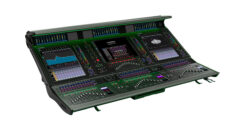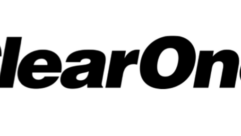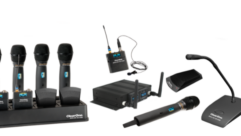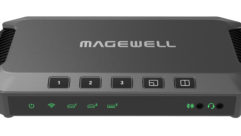
Technology Showcase: Audio Conferencing Systems
Apr 1, 2005 12:00 PM,
By Gary Eskow
From boardrooms to courtrooms to legislative chambers, conferencing systems offer features for every application.
Conferences need to be held, people need to convene, and problems need to be solved. Whenever large groups of people meet, be it in a boardroom, around a large conference table, or in legislative chambers or courtrooms, and input is required of all the participants, it’s important that each person is heard and understood. This is where audio conference systems, or discussion systems, come in.
Brahler manufactures the CDS200 conference system, which features a function for participant identification.
These systems must be able to allow people to speak naturally and comfortably in a large venue. When multiple opinions are voiced, the confusion that comes from many people talking at once must be controlled, so one or more designated systems should have the ability to mute the entire system, leaving only one mic active (generally the chairman’s) to call the meeting to order. Other functions that may be required include the ability to cast and tally votes or provide linguistic interpretation. These types of systems have enjoyed great popularity in Europe, and they have recently been seeing more use in the United States.
Without further ado, let’s look at some of the conferencing products currently on the market that offer these features:
LISTEN TECHNOLOGIES/BOSCH
Listen Technologies has recently assumed distribution of Bosch conference systems. It offers the Bosch DCN system, which is made up of three Central Control Unit options. The LBB 3500/05D Basic Central Control Unit can control up to 240 chairman or delegate units and facilitates mic management, voting, and simultaneous interpretation. The LBB 3500/15D allows the incorporation of a PC for additional control and management features, and the LBB 3500/35D extends systems up to an additional 240 units.
The LBB 3530/00 Delegate Unit features a built-in loudspeaker and two headphone jacks. The /50 option features an extra-long flexible stem mic. The LBB 3533/00 and /50 chairman units are similar in style to the delegate units and feature a microphone priority button. Versions of the chairman and delegate units are available with a language channel selector for simultaneous interpretation or for discussions where more than one language is used.

Shure ConferenceONE delegate unit.
SHURE
Shure’s entry is the ConferenceONE system, featuring the C1-Cs and C1-Ci chairman consoles. The C1-Cs standard console features a telescoping mic arm, a “mic active” indicator, menu buttons, LCD display, and integrated speaker and amplifier. The C1-Ci includes Shure’s Intellimix technology, which activates microphones for speech but ignores room noise, activates the best single mic for each speaker, and keeps the last mic functional until a new one is activated.
The system’s delegate units are the C1-Ds and C1-Di. The ConferenceONE Standard system supports up to 30 delegate units and the ConferenceONE with Intellimix supports up to 60 delegate units.
IRP PROFESSIONAL SOUND PRODUCTS
The IRP dwcs2.4 digital wireless conferencing system operates in the 2.4GHz range. The data and audio transfer characteristics are fully digital, and all audio signals are digitally encoded. Each system has a unique system address. As a result, systems with different addresses are unable to communicate with each other, the system is virtually secure from unauthorized monitoring, and two or more systems can be operated in the same facility without interference from the other systems.
IRP states that in theory, one central station can operate up to 8,000 microphone stations. The system is made up of chairman and delegate microphone stations, the base receiver, and system processor (available either with or without audio foldback).
AKG ACOUSTICS
The AKG CS 2 conferencing system can service from two to 200 stations. The CS 2 central base station controls all microphone channels. Two types of microphone stations are available, the CS 2 CU chair station with a priority button (multiple chair stations can be incorporated in a system) and the CS 2 DU delegate station.
Each station comes equipped with two loudspeakers, two headphone outputs, and a Voice Zoom function, so one station can be used by two people. Bottom panel dip switches and pots on each microphone station allow access to functions: voice activation threshold, voice activation hold time, microphone automute after user stops talking, enable/disable NOM limitation, voice activation on/off, priority level, Voice Zoom on/off, loudspeaker/headphones level reset or last setting, and individually adjustable compression. Two gooseneck lengths are available, 12in. or 20in. A range of optional accessories is also available.
SENNHEISER

Sennheiser SDC8000 central unit.
Sennheiser offers the SDC8000 digital conference system. The system consists of the SDC8000CU central unit and three configurations of chairman units, as well as three configurations of delegate units. A built-in power supply supports up to 90 delegate terminals, and up to 12 central units can be daisy-chained to create systems with up to 1,024 conference terminals. The central unit features two analog audio inputs (for wireless microphones) and an analog audio output for recording units or an additional public address system. The central unit is also fitted with RS 232 interfaces for PC, media, and camera control.

SDC8000C delegate unit.
The chairman and delegate units feature gooseneck mics with red LED rings that indicate whether a terminal is active. Other features, depending on configuration, include built-in loudspeakers, headphone jacks, channel selection keys, voting keys, and LCD display.
The SDC8000C, SDC8000CC, and SDC8000CV consoles feature a chip card slot that allows users to identify themselves to the board, and text messaging via PC for the delegate and interpreter consoles. External audio equipment can be brought into the system via the SDC8000AO Analog Output module.
DIS
DIS (Danish Interpretation Systems) manufactures the CDS 4000 Conference Discussion System series and the DCS 6000 Digital Conference System. The CDS 4000’s SW 4200 software provides name handling with a delegate database, a timer function, a speakers log, and a database for downloading name lists. The software can also map the room layout and display names and locations of speakers.
The DCS 6000 combines microphone handling, voting, and interpretation into a single system. The fully digital DCS 6000 can handle 39 incoming audio channels (eight floor and 31 interpreted channels); 33 distributed channels (two floor and 31 interpreted channels); and uses DCS-LAN, a proprietary high-speed, all digital audio channel over standard Cat-5 cabling. The firmware in the delegate, interpreter, and central units is upgradeable through RS-232 connections on the central unit.
The DCS 6000 Conference Management Software (SW 6000) offers extended control and more features, such as additional screen languages, delegate information, and microphone, voting, and interpretation management from a PC or client/server network.
BRAHLER ICS
Brahler offers the CDS200 and CDSVAN conference systems. Also, in January, Brahler released the DC10 Delegate Unit, which works in conjunction with its CDS200 product line. The unit is equipped with a loudspeaker, and is managed by the central unit and CDS200 software.
The CDSVAN conference system features realtime digital audio processing. Devices such as limiters, gates, and EQs, as well as various mixing and matrixing configurations, are available via the included software instead of by adding additional hardware. Components include the PSU04 power supply unit. Each PSU04 has four outputs, and each output can support up to 20 delegate units. Delegate unit options include the DV9, with controls for voting, a chipcard reader for personal identification, name handling, and speaker lists, and the DDV9 Dual Delegate unit, with two sets of controls and two card readers.
BEYERDYNAMIC
Beyerdynamic markets a wide range of audio products designed for the professional audio broadcast, systems integrations, and high-end conference markets. The company’s MCW-D 100 control unit can control up to 65,000 microphones. The control unit also has an RS-232 serial interface for configuration or operation via PC, or for connection to an existing media control system. As an option, the control unit can be extended with digital audio inputs and outputs with the AES/EBU and SPDIF standards.
The MCW-D 200 is a wireless, digitally encrypted conference system that features up to eight bi-directional channels for simultaneous transmitting and receiving. Transmission is in the 2.4GHz band (ISM band). In DSSS mode, digital encryption protects against unauthorized listening. Software handles the individual configuration of each microphone station. Chairman and delegate units are available with or without integral loudspeakers. Stations are also available with gooseneck or boundary mic options.
INTERKOM ELECTRONIC
Interkom Electronic manufactures the DMC (Digital Multimedia Congress) system. DMC features the DCL delegate/president station — all of the functions of the president station can be assigned to any station by way of the central unit DCU. Each DCU can control up to 1,400 stations, and the DCUs are cascadable for a total capacity of more than 8,000 units. Interkom also manufactures the iCC conference system.

TOA TS-800.
TOA
TOA offers the TS-800/900 Series Infrared Wireless Conference system, designed for medium- to small-scale conferences. The TS-800 can handle up to 64 chairman/delegate units, and the TS-900 manages up to 96 chairman/delegate units. Infrared wireless technology allows the system to be reconfigured depending upon room or participant requirements.
This technology also provides security from eavesdropping. Up to 16 infrared transmitter/receiver units can be connected to provide an approximate 30m × 30m coverage area. Both systems feature a speaker restriction function that can be preset to one, two, or four to limit the number of speakers at any one time.
For More Information
AKG Acoustics
www.akgusa.com
Beyerdynamic
www.beyerdynamic-usa.com
Brahler
www.brahler.com
DIS
www.dis.cc
Interkom Electronic
www.interkomelectronic.com
IRP Professional Sound Products
www.irp.net
Listen Technologies
www.listentech.com
Sennheiser
www.sennheiserusa.com
Shure
www.shure.com










